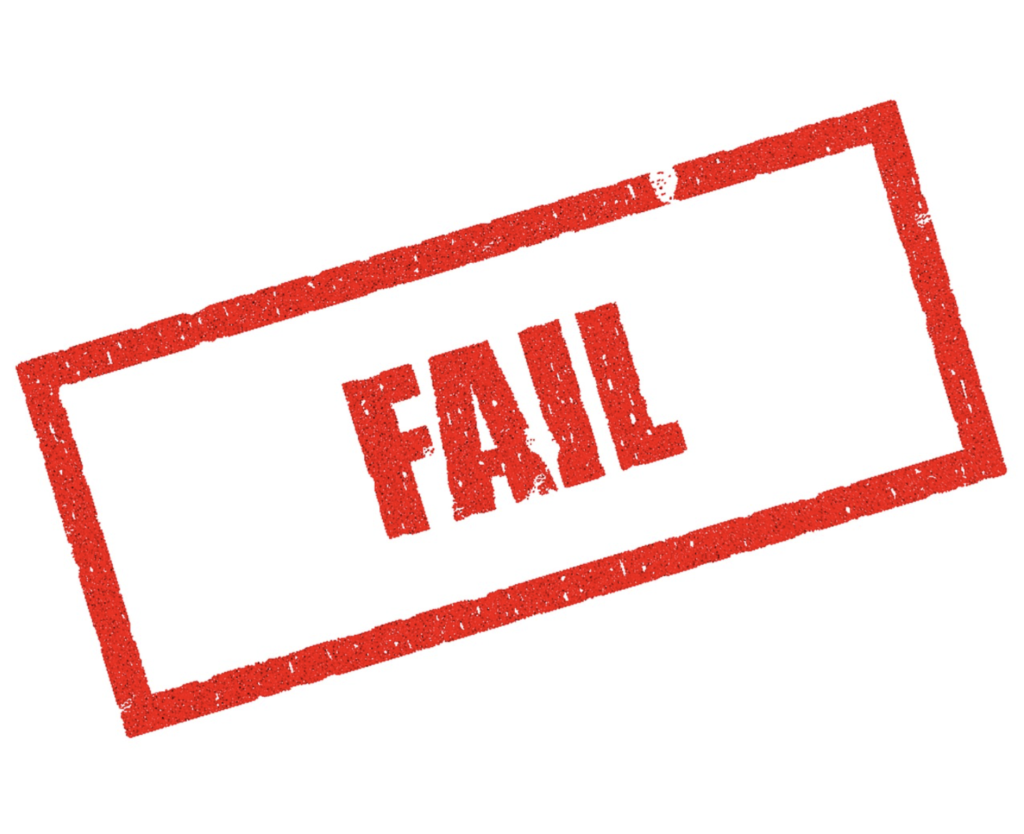If you are like most of our dissertation consulting clients, you are passionate about your research topic and are driven by the desire to promote positive change in your particular field. Although you may have gained a thorough understanding of your thesis or dissertation topic through your professional experience, the literature review chapter helps to communicate the importance of this topic to readers. By providing a comprehensive understanding of what is known versus not known about your proposed research topic, the chapter also clarifies how your study extends the current research (Randolph, 2009). Additionally, whether you have chosen a quantitative or qualitative research method for your thesis or dissertation, the literature review helps to illustrate how your choice of research method will be useful in uncovering new insights to address your research gap.
Clearly the literature review is of monumental importance to the study, and equally monumental is the task of writing the chapter. Literature review chapters usually run 30 to 40 pages and can require anywhere from 50 to 80 (or more!) sources. Many of our dissertation consulting clients have shared that immersing oneself in reading and writing about so many individual studies can make it easy to fall into a “can’t see the forest for the trees” state of mind. That is, you might find yourself focusing so minutely on individual studies that you fail to see the “big picture” told by the studies as a whole.

Taking the time to stand back from the individual studies and consider the structure of the chapter may help you to grasp this elusive big picture. As you approach this crucial chapter of your dissertation, we hope that this article helps you to think about questions of structure at multiple levels: the chapter level, the section level, and the paragraph level. We will also go over a handful of style hints shared by our APA editing and writing style gurus, to help you polish the work at the sentence level.
Chapter Structure: The Funnel Approach
To kick off this discussion of structure, we’ll start at the highest level, which is the structure of the chapter itself. Our dissertation coaches always recommend using the “funnel” approach, which refers to a broad-to-narrow chapter structure. When we say, “broad-to-narrow,” we’re talking about how to sequence your discussion of the themes and concepts from the literature related to your topic. To create this funnel structure, you start with foundational concepts (i.e., the broad part of the funnel) and then progress through increasingly specific themes in the literature, ending with your research gap (i.e., the narrow part of the funnel).

Let’s ground this in an example from a field that many of our dissertation assistance clients are pursuing: nursing. For this example, imagine that you were broadly concerned with shortages of nurses in rural areas of the United States, and you were planning to conduct statistical analysis to determine how a mindfulness program affected retention of nurses in such areas. Here are some possible headings that would reflect a broad-to-narrow structure:
- Overview of Nursing Shortage in the United States
- Nursing Shortage in Rural Regions of the United States
- Nursing Shortages and Turnover
- Predictors of Turnover in Nurses
- Work-Based Programs That Impact Retention
- Mindfulness Programs and Nurse Retention in Rural Areas
Notice that you start with a broad overview of the nursing shortage in the United States, moving ever closer with each section to your dissertation’s specific problem and research related to mindfulness programs and retention in rural areas. This helps the reader to understand the broad strokes of the nursing shortage problem and the variety of factors that influence retention or turnover. It also helps to connect retention or turnover to the broader problem of the nursing shortage, which then clarifies why your specific investigation of mindfulness programs is relevant.

Note that within some or all of these main sections, you would likely break out multiple subsections to discuss subthemes in the literature under each of those main topics. For example, “Predictors of Turnover in Nurses” would likely be broken into subsections on subthemes like work-life balance, leadership, and job stressors. Our dissertation coaches suggest limiting any single section to 3-5 pages; beyond this, you should create separate subsections for subthemes. This helps to organize the material more clearly, which aids the reader in following the flow of ideas and information that you present. As the APA editing and formatting manual guides us, clarity should be the highest priority in scholarly writing.
Section Structure Tips
After chapter structure, the next level to consider is the section. Now, it may seem like a no-brainer, but a point our dissertation consultants emphasize is making sure that the content discussed in each section aligns with the heading. For example, if your heading is, “Leadership and Job Satisfaction in Novice Teachers,” don’t stray into a discussion of leadership and say, organizational commitment—this is a related but distinctly different construct. You may find research on all three variables, which would be acceptable to discuss in this section. But, you might also consider whether organizational commitment research warrants its own subsection.
Regardless, keeping your sections and subsections focused helps the reader to follow the flow of your discussion. It also keeps your dissertation or thesis committee happy. Having supported countless dissertation assistance clients through committee revisions, we know for sure that a comment of “Where are you going with this?” is never a good thing. If your committee reviewers feel that your content is “all over the place,” they will certainly require you to reorganize and rewrite unfocused sections. So, it’s definitely worth your while to pay close attention to how you structure the research into sections.

Another key tip that our dissertation consultants highlight is to make sure that the first sentence of each new section clearly relates to the main topic of the section as indicated in the heading. If it is not totally obvious, it is also good practice to lead off with a sentence that ties the section heading back to your main research topic. This helps the reader to understand why the section is there in the first place.
A common rookie mistake many of our dissertation assistance clients make is to jump right into the first study on the topic immediately after the heading. But, doing so fails to orient the reader to the importance of the section’s topic to the study as whole. Going back to our hypothetical dissertation topic about nurses, consider the heading, “Work-Based Programs That Impact Retention.” For this section, you’d start with something like: “Promoting nurse retention will help to alleviate the nursing shortage, and work-based programs have had positive impacts upon retention among nurses.” Then, jump into your discussion of the relevant research. Remember that the reader hasn’t been immersed in the research literature to the degree that you have, so you need to help them understand how each theme relates to your dissertation topic and problem.
A final tip is to include synthesis paragraphs at the ends of major sections. For lengthy major sections that include multiple subsections, such a paragraph can help the reader to process the key findings discussed throughout the section. With the main research topic and research gap in mind, tie together the most relevant findings and gaps in knowledge in this final paragraph of the section.
Paragraph Structure: The MEAL Plan
You most certainly understand that, within your sections, you need to structure your discussion of the relevant research into paragraphs. What our dissertation consultants share, however, is that most novice researchers do not understand how to structure those paragraphs. Many of our dissertation assistance clients have shared that it initially seemed most logical to devote each paragraph to the in-depth discussion of an individual study, providing methods, participants, findings, and conclusions for one study before moving on to the next. After laboriously writing up and editing paragraphs for each study, they were heartbroken to find that their dissertation or thesis committees were not at all happy with their work.

Although this approach makes sense at first glance, it actually results in a fairly disjointed presentation of the research literature. When you only discuss one study at a time, you are basically just creating an annotated bibliography but in chapter form; most committees will not accept this structure. Instead, your aim should be to develop an integrated discussion of the research literature. This means that you need to weave all of the various findings of your studies together into a coherent narrative, and this “weaving” takes place at the paragraph level. This is where the “MEAL” approach comes into play (Hicks, 2017).
| The MEAL Plan | |
| M = Main idea |
|
| E= Evidence |
|
| A = Analysis |
|
| L = Link |
|
It may help to review an example of a paragraph that is structured according to the MEAL plan. Again, relating back to our hypothetical dissertation topic of nurses in the rural United States, let’s jump into a paragraph in the “Work-Based Programs That Impact Retention” section:
Flextime programs that provide nurses with greater freedom with their schedules may be helpful in increasing retention. Supporting this proposition, Hartford et al. (2020) found that nurses who had access to flextime scheduling were more likely to stay in their positions over a 2-year period than nurses who did not have access to such scheduling options. Demonstrating the possible role of burnout in this relationship, Poole and Swain (2019) found that nurses who had access to flextime scheduling were less likely to report burnout compared with nurses without flextime programs. Taken together, these studies’ findings suggest that work-based programs such as flextime that are preventive of burnout may help to promote retention among nurses.
Notice that all elements of MEAL are present in this example. This includes a main topic sentence (M); provision of evidence from two studies (E); analysis of studies in relation to each other and possible implications (A); and a conclusion sentence that links back to the main idea and dissertation topic (L).
Sentence-Level Style Tips
Now that we have covered the key structural guidelines for your literature review, let’s cover some tips for perfecting your work at the sentence level. Dissertation editors who are familiar with the APA editing and style guide recognize that complying with APA involves more than just getting your citations and references right. It also means following a variety of writing style rules to maintain a “scholarly tone.” What is a scholarly tone, you ask? Following are some examples to help clarify important dimensions of dissertation or thesis writing tone.
| Not Scholarly Tone | Scholarly Tone |
Using contractions:
|
Write out the full words:
|
Using conversational, chatty language:
|
Use more formal language:
|
Using metaphors or figures of speech:
|
Use literal, specific terms:
|
Using emotional or opinionated terms:
|
Take an objective, neutral stance:
|
In addition to scholarly tone, our dissertation editing experts also recommend paying attention to the coherence of your writing. When writing your paragraphs following the MEAL approach, be sure to use transitional language as you start new sentences. This helps to create a smoother flow of ideas in your dissertation and prevents your writing from having a “choppy” style that is unpleasant or distracting for the reader. When you use transitional language to discuss similarities and differences between studies, this helps you to meet the “A” (i.e., analysis) dimension of MEAL as well.
| Tip | Example |
| Use transitional language | Without transitional language: Students working in peer groups expressed that collaboration with group members gave them a sense of community (Huong et al., 2020). Richland and Terrel (2021) found that undergraduates assigned to group projects reported higher levels of psychological sense of community compared with students who completed individual projects.
With transitional language (in italics for clarity): Students working in peer groups expressed that collaboration with group members gave them a sense of community (Huong et al., 2020). Affirming these findings, Richland and Terrel (2021) found that undergraduates assigned to group projects reported higher levels of psychological sense of community compared with students who completed individual projects. |
Additional writing style tips drawn from the APA editing and style guide are to use active rather than passive voice whenever possible, and avoid anthropomorphism. Most of our dissertation consulting clients are familiar with the difference between passive and active voice, but anthropomorphism usually needs a bit of explanation. Anthropomorphism is the attribution of human actions to non-humans, and in dissertation or thesis writing, these non-humans are usually things like studies, research, the literature, or theories (e.g., “The study investigated…” or “The theory posited…”).

Even though you see this all the time in published research, we have found that many of our dissertation consulting clients’ committees—especially those at the major online universities—are quite picky about this point. Instead of saying that studies or research “investigated” or “found” anything, it helps to think in terms of the human actors who are actually capable of investigating or finding things. To avoid anthropomorphism, you might say, “Jones et al. (2021) investigated…” or “the researchers found…”
| Tip | Example |
| Use active voice rather than passive voice | Passive voice (avoid): It was found that the number of medication errors made by nurses was predicted by number of overtime hours worked (Ronsen et al., 2019).
Active voice (preferred): Among nurses, a higher number of overtime hours predicted higher occurrences of medication errors (Ronsen et al., 2019). |
| Avoid anthropomorphism | Anthropomorphism (avoid): The study investigated the relationship between absenteeism and organizational performance.
No anthropomorphism (preferred): The purpose of the study was to investigate the relationship between absenteeism and organizational performance. |
Many doctoral or thesis candidates simply turn to editing services to fine-tune any issues of writing style in their studies, and our dissertation editors are here to help out in this way if you’d like! We’ve found that some of our dissertation consulting clients adhere to more of a “DIY” ethos, and our dissertation coaches are certainly happy to provide writing style guidance on these fine points. We hope that these tips on structure and style help you through the arduous task of writing your literature review, and feel welcome to reach out for additional support any time!
References
Hicks, R. W. (2017). Writing: Do make a MEAL of it! Clinician Reviews, 27(7), 8-10. https://cdn.mdedge.com/files/s3fs-public/Document/June-2017/CR02707008.PDF
Randolph, J. (2009). A guide to writing the dissertation literature review. Practical Assessment, Research, and Evaluation, 14(13), 1-13. https://doi.org/10.7275/b0az-8t74